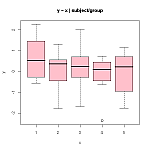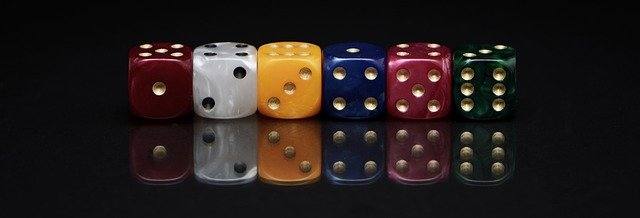
Some Probability Theory Examples
Probability Statements
There are a number of common misunderstandings regarding chance, including the following.
• Any occurrence has an equal probability of happening.
• Sample size is meaningless when calculating chance from statistical results
• The existence of the players has little bearing on the outcome of skill games
• Numbers that are "lucky" or "unlucky" may have an effect on random incidents.
• "Lucky/Unlucky" numbers can influence random events
• In a random case involving allocation, the outcome is determined by the number of participants rather than the number of rations.
• If events are unrelated, the outcomes of a sequence of isolated events have an equal chance of occurring.

All of the above assertions are false. Using the probability principles described in topic two, thoroughly explain the assertions and errors.
1. I've tossed an impartial coin three times and each time I've gotten heads; the next time I toss it, I'm more likely to get tails.
2. The Rovers take on the Mustangs.
3. Whether the Rovers win, lose, or tie, they have a 1/3 chance of winning.
4. I roll two dice and report the outcomes.
5. Since there are 12 different options, and 6 is one of them, the chance of having a total of 6 is 1/12.
6. Mr. Purple will need major surgery. Ninety percent of patients who have this surgery heal fully. If Mr. Purple gets this surgery, there is a 90% probability that he will recover fully.
7. I throw two coins in the air. Since I can get Heads and Heads, Heads and Tails, or Tails and Tails, the chance of having heads and tails is 1/3.
8. Since 13 is an unlucky figure, winning raffles with ticket number 13 is less possible than with a different dumber.
Answer
(1) The statement is incorrect, because regardless of the previous times that coin was flipped, the probability of getting a tail is ½, for a fair coin, because each flipping is independent from the other.
(2) The statement is incorrect, because even though the probabilities need to add up to 1, the probabilities do not need to be all equal. Therefore, we know that we added the probability of winning, losing and having a draw, we would get 1, but they do not have to be all equal to 1/3.
(3) The statement is incorrect. Different outputs will have different probabilities. In fact, for example, getting a sum equal to 2 is 1/36, because there 6 possible numbers for each die, so there are 36 possible combinations, and only getting "1" on each die will lead to a sum of 2. Also the same line, in order to get a sum of 6 we can have: "1" and "5", "2" and "4", "3" and "3", "4" and "2", and "5" and "1", so then the probability of getting a sum of 6 is 5/36.
(4) The statement is incorrect because it is different to be AMONG the 90% of those who make a recovery that HAVING a 90% chance of recovery.
(5) Not true. If two coins are flipped, we have the following 4 possible outcomes: (T, T), (T, H), (H, T) and (H, H), which means that the probability of having Head and Tail (in any order) is p = 2/4 = 0.5.
(6) There is no such thing as an "unlucky number". Probabilities are computed based on the likelihood of occurrence established by a probability distribution. A number of "13" in a raffle is a number as good as any other number.

References
Gravetter, F. & Wallnau, L. (2013). Essentials of Statistics for the Behavioral Sciences. Wadsworth Publishing; 8th edition.Related Content


